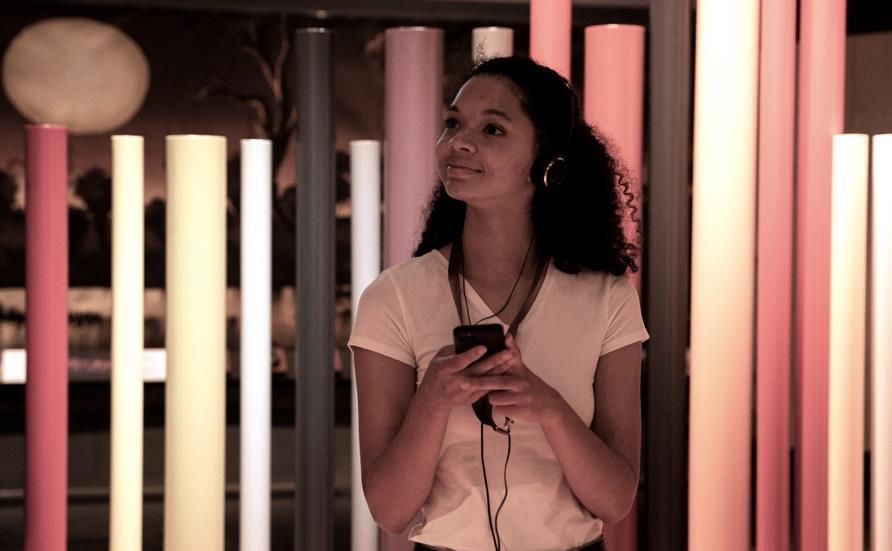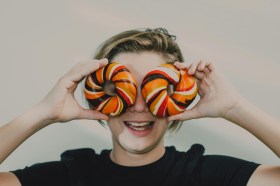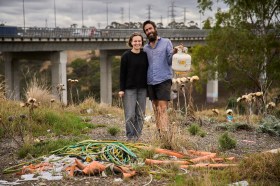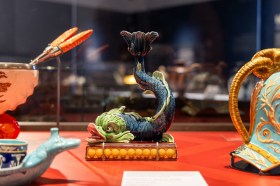It started with a passion to do things differently – transforming the visitor experience at Hobart’s iconic Mona (Museum of New and Old Art) using app technology.
That passion has become the signature of experience design company, Art Processors who are the creators behind Mona’s handheld audience navigation, ‘The O’, and a new intuitive guide to the WA Museum: Boola Bardip.
Tony Holzner, Art Processors’ Creative Director & Co-Founder, said that his team is interested in creating a ‘depth of material and content way beyond the traditional mechanisms of museum labels and the audio tour’.
Art Processors has since developed equally bespoke experiences for the Australian Sports Museum, Bendigo Art Gallery, Art Gallery of NSW, Australian War Memorial – plus many others – and has become a global company with teams in Melbourne as well as New York City, Washington, D.C., Atlanta, Milwaukee and San Francisco.
Art Processors new experience for the WA Museum, the Gogo (named after the ancient fish that is WA’s State fossil emblem), draws on the company’s growing capabilities in immersive content and technology, ‘showing what is possible today,’ said Holzner.
Why is the Gogo so revolutionary for the visitor space
The team at Art Processors has worked closely with the Museum’s curators and researchers to create an experience that is totally original.
Working from the brief that the mobile experience had to create a sense of place and give room to the diversity of people’s collective stories – including Indigenous storytelling – the team chose to turn to the emotive trigger of sound.
‘The Museum intends to be a gateway to Western Australia, and we are helping with that through this sound overlay and narratives that unfold around the exhibitions,’ explained Holzner.
Gogo features two options for the user: Let Us Guide You is a curated adventure through the Museum, while Go Your Own Way allows the visitor to choose their own adventure, directed by Bluetooth beacons around the Museum.
‘It shows best what is possible, and adds a deep, emotive element to what viewers are looking at in a highly immersive way.’
Holzner continued: ‘Once the headphones are on it’s like stepping inside a film where the exhibits become a stage for the story to unfold as you wander around the amazing new Museum.’
He believes there is more room to experiment and move with sound-based content, and allows the mobile experience to seamlessly complement the visual domain, which is already so rich in the Museum space.
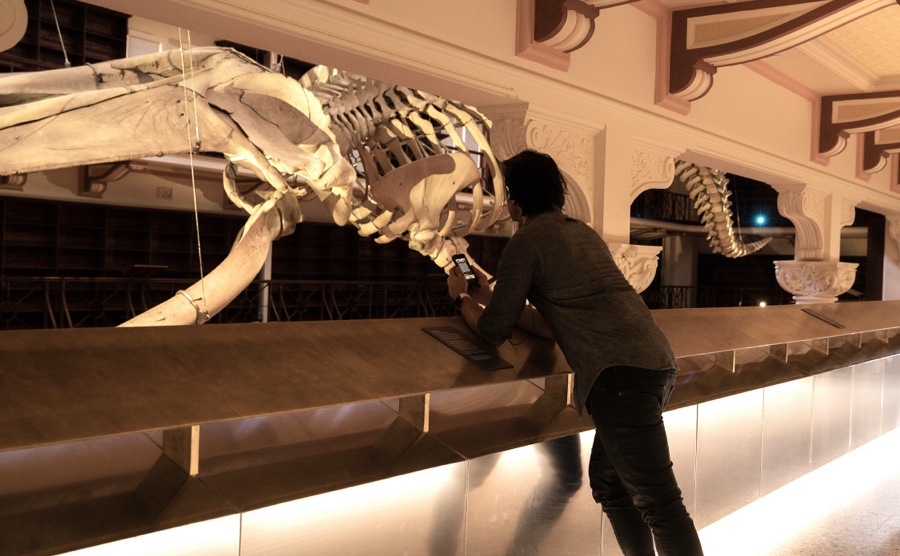
The blue whale ‘Otto’ at Western Australian Museum Boola Bardip. Photo: Frank Carroll, Contrast Creative.
‘One of the important trends we are seeing in the Museum space, is how they can leverage the power of everyone’s portable devices, and by focusing on the emotive side of visitor engagement, create this depth, diversity and a lasting gallery experience,’ he added.
With regard to keeping up with an ever-changing tech landscape, Holzner told ArtsHub: ‘It gets faster and faster, and while it feels like the challenge is keeping up, it’s also knowing where to go next.’
‘We welcome the rate of change and are always looking at what else is happening to inform and refine our approach,’ said Holzner.
It is a feeling that many of us across the arts sector face – the challenge to embrace the latest technology and understanding the value add it might offer.
Holzner says Art Processors don’t have a preference what scale project they take on.
‘We have some wonderful smaller projects – just one exhibition in a small organisation – and they can have interesting outcomes’ said Holzner. ‘We jump at the chance to do something different in those situations.’
Capacity for data analysis
Increasingly, organisations today are faced with the need to measure audience engagement. This can often be difficult.
‘The idea here is, instead of guessing what works in terms of content, you can measure how audiences are engaging with it,’ said Holzner.
Powered by Art Processors’ unique Museum Operating System (MOS), the digital platform created for WA Museum not only supports the Gogo guide but also helps museum staff really understand their visitors’ experience.
‘The data gathered is quite granular, for each piece of content. Over time, organisations can get an accurate reading of what works and what doesn’t.’ He continued: ‘It can guide the way you invest in content and the different styles and approaches you take over time – eliminating the guess work.’
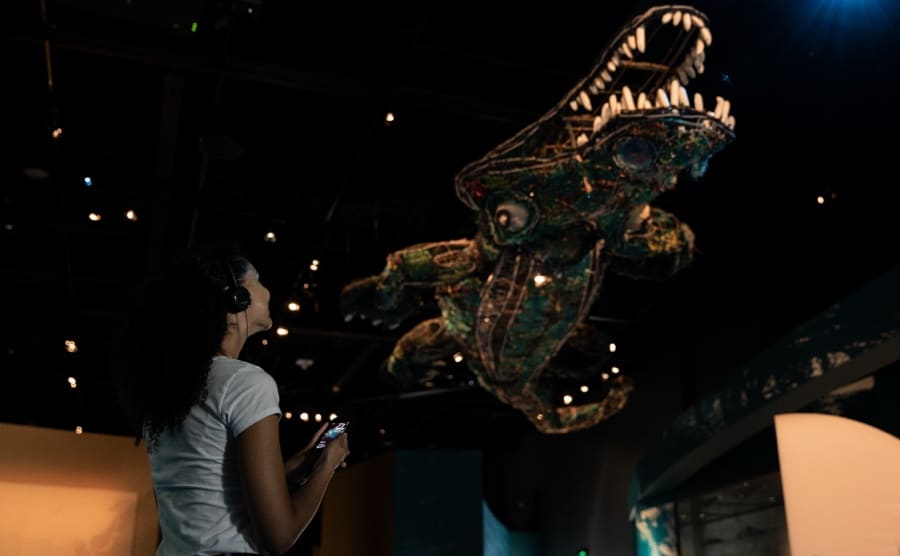
GhostNets Australia, Big Croc, 2011 at Western Australian Museum Boola Bardip. Photo: Frank Carroll, Contrast Creative.
Overcoming the fear
There is often fear in taking a leap into the tech sphere, but if 2020 has taught us anything, it is that we do have the capacity to leap forward and change when the need presents.
Holzner said: ‘One of the benefits of speed of technology, is that it gets easier in terms of cost. I just recommend diving in. Taking risks is critical – it’s part of any important project – and the culture sector is innovative.’
‘We love to work with people who will take a risk.’
– Tony Holzner, Art Processors.
‘Making sure that we are always adapting the technology to the visitor, staying focused on the human experience, and creating positive impact on cultural sector audiences is critical,’ Holzner told ArtsHub.
While the key for Art Processors is the exciting experiential moment – and memory – for a visitor, it’s also important to provide the capacity for these new interpretive layers to be flexible and grow content over time.
That means audiences have a fresh experience each time they journey into the rich physical world of the museum.
The Gogo app (Gogo – WA Museum Boola Bardip) is available in app stores and is free to download.
Art Processors is a global experience design and creative technology company, producing immersive digital experiences for galleries and museums around the world from Mona in Tasmania, Australia to The Getty in Los Angeles, USA.
To learn more about Art Processors.
